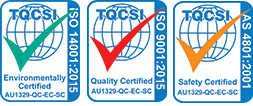Aside from absenteeism, job turnover, interpersonal job issues, poor job performance and lost productivity, alcohol and other drug use in construction can be particularly dangerous. When affected by alcohol and other drugs on site, you risk on-the-job injuries or death as a result of impaired coordination, judgement and the ability to see and respond to hazards.
Alcohol and other drug use is not unique to the construction industry. In a recent Policy Talk paper written for the Australian Drug Foundation, workplace alcohol and other drug experts Ken Pidd and Ann Roche identify the full extent of the issue of alcohol and other drugs on Australian workplaces. They recognise that the annual cost of alcohol-related absenteeism alone is estimated to be up to $1.2 billion, while alcohol and other drug use (not including tobacco) account for about $5.2 billion in lost productivity and workplace injuries and deaths.
Phillip Collins, Head of Workplace Services at the Australian Drug Foundation, says that these figures are quite staggering. “Best practice organisations recognise that these costs directly impact on their bottom line and that the drinking activities and drug use of an employee can affect work performance,” he says.
While the dollar cost to businesses across Australia might be quite a shock to some, it’s nothing compared to the human cost. Alcohol use contributes to 5 per cent of all Australian workplace deaths and 11 per cent of accidents, as well as the huge human toll on families and relationships impacted by alcohol and other drugs.
The construction industry has one of the highest levels of workers who use illicit drugs, second only to the hospitality industry. Tradespeople are the occupational group who are most likely to drink at risky levels.
In a 2012 survey of construction workers by the Sustainable Built Environment National Research Centre, one third of workers reported experiencing negative effects from their co-workers’ drinking.


